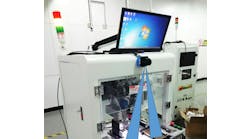A singular focus often brings clarity and simplification to an otherwise complex issue. When Rockwell Automation and Schlumberger combined forces to form Sensia, the two organizations easily could have run aground with added weight and a cumbersome merging of cultures. But the recipe for the partnership included 500 people with automation expertise and 500 people with field-operations expertise, putting their minds to work exclusively on oil-and-gas-industry optimization.
“We are the unification of sensing, intelligence and action,” explained Neil Enright, vice president, sales and marketing, at Sensia. “We’ve adopted a philosophy of simplicity. We provide a solution at its base form to release value in our customers.”
Sensia has brought together about 1,000 professionals, operating with 11 legal entities and a presence in more than 80 countries to combine competencies and create irreducibly simple solutions.
“In the oil-and-gas industry, automation has existed for a long time,” explained Enright. “We’ve been providing automation across the value chain for many years. We have installed systems, but there are islands of information. Sensia is able to connect those isolated systems for productivity gains.”
The oil-and-gas market is facing numerous challenges, including price volatility, lack of available talent in geographic areas and desires to increase capacity while decreasing the capital to do it, said Enright. The same can be said for discrete manufacturing.
Sensia’s customers want not only increased production with reduced costs, but they also want accelerated time to first oil, maximized use of existing assets and improved safety, he explained.
“Automation is critical to facilitating the journey of digital transformation,” said Enright. “To enable that, we can provide data from disconnected systems to operators and help them to deploy the correct resources or improve the process. We have the capability to deliver process-manufacturing solutions.”
Automation solutions, measurement solutions, digital solutions and lift-control systems are the core of Sensia’s offerings, putting intelligence into action via a four-stage process: sense, think, control, optimize. This can be applied to discrete manufacturing.
“We take sensor information and analyze it using domain expertise,” said Enright. “We manage the process, and we continually improve performance. To create an insight is one thing, but you must create an action from the insight.”






